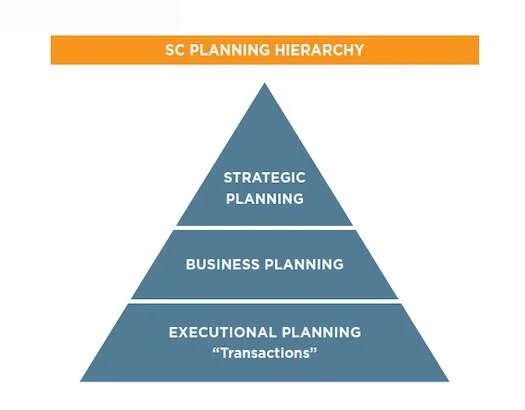Supply Chain Planning Systems Create Total Value
Supply chain complexity has increased exponentially over the past several decades because of globalization, consumer demand for increased product customization, and the development of multi-functional business processes to address these challenges. To achieve peak customer service; drive total value creation; and decrease complexity, a holistic supply chain planning process is needed.
To that end, the University of Tennessee, Haslam College of Business’ Global Supply Chain Institute (GSSI) has collected data on the critical planning systems that successful businesses are using to drive end-to-end supply chain total value. With this data, the GSCI has developed a supply chain planning system model that reflects best practices in managing a global supply system.
GSCI Supply Chain System Planning Model
Keep the end in mind
Planning processes are intended to optimize total value by meeting or exceeding consumer and customer requirements. Successful planning systems keep the end in mind by recognizing that these requirements are best determined through the eyes of the consumer/customer. Putting the consumer/customer first in the model reminds us that, no matter how efficient the planning process is, it is only effective if it delivers on business needs.
The next element in the planning system is Demand/Supply Integration (DSI). DSI ensures that the entire multi-functional organization is aligned with the same plan. Total value creation is optimized when everyone in the organization is working from a shared plan. DSI has the demand and supply plans as its heart.
Improvement
Following DSI in the model are three aspects of strong planning systems that ensure the long-term health of the supply system. Planners must manage supply plans as a system, leveraging the planning tools/processes (e.g., MRP, WMS) to optimize results. Planners must also make wise choices on supply chain operating strategies to deliver competitive cost and service and effectively use cash. Key elements of best-in-class supply chain planning systems are:
Manage as a system—Best-in-class supply chains manage planning as a system. The system owner documents the system, including flow-charting the process; develops a scorecard (in process and output measures); and manages action plans, regular leadership reviews and continuous renewal. This systemic approach is the proven way to manage complex systems for long-term continuous improvement.
Optimization—The current key planning tools are complex information systems. These must be real-time and cover the end-to-end supply chain. They include tools such as MRP, MPS, TMS and DRP. Supplemental planning tools such as artificial intelligence (AI) can document historical decisions/impacts and make recommendations for current issues. Additionally, “big data” can allow the information planning system to run thousands of calculations to optimize results. Planning optimization provides the capability to deliver customer service, cost, cash and time goals.
Operations strategies—Understanding current supply chain capability is critical to successful planning. Maximum outputs are generated when the supply chain is operated at its peak. Supply plans should reflect:
Instantaneous capacity – This can significantly reduce inventory levels, deliver superior supply chain responsiveness (customer service) and reduce/eliminate the reliance on a forecast.
Daily planning windows – The shorter the planning window (locked zone), the more responsive the supply chain.
Lead times – The shorter the materials, production and transportation lead times, the more responsive the supply chain.
Demand triggers – The use of demand triggers (data in a supply chain or planning system that creates the requirement for previous supply chain activity) can better match supply capability with demand.
Drumbeat – Keeping the supply chain on a rhythmic drumbeat reduces variation, which eliminates waste (improves cost), reduces inventory and enhances customer service.
Planners are the owners and leaders of these strategies. The supply chain should be planned consistently with the operations strategy.
Traditionally, planners built a wall around the operational units, attempting to lower cost and improve internal efficiency. Operational requirements with long lead times, long planning windows, long fixed zones and large minimum order quantities (MOQ) were the norm.
Modern supply chains eliminate these walls and build supply chain capability to match business requirements. This shift has created a focus on time. Fixed zones, planning windows and lead times are reduced to the absolute minimum. MOQs have been eliminated or significantly reduced. These time-based changes create more responsive supply chains.
Click HERE to view the original article.

